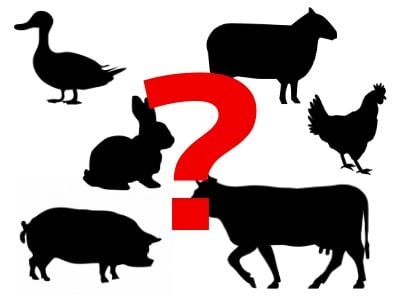Meat And Animal Derivatives, And Why They Should Be Avoided
Posted on

It is the technical and legal catch-all term used for any part of a warm-blooded, land-based animal found in your pet’s food or treats. However, manufacturers will only tend to use it on their packaging if they have something to hide.
Think about it. You’re in the marketing team of a big pet food company. Your product has 25% dried chicken. Which of these will look better on your packaging:
25% Dried Chicken
or
25% Meat and Animal Derivatives
They are both allowed. They are both legal. It’s clear which is the obvious choice though, isn’t it?
If you have a good product with quality ingredients, you are going to want to make that clear to your customers.
So, why would a company use the vaguer alternative? It’s because they can hide behind it.
The term ‘meat and animal derivatives’ covers all warm-blooded land animals. Generally, the bits of the carcass that remain once the 'good bits' have been taken out for human consumption; usually predominantly made up of offal rather than 'conventional meat' (aka lungs, spleen, heart etc). It can also include the rest of the carcass in its entirety - beaks, feathers and hooves included (aka 'animal derivatives').

A key aspect to this is that the manufacturer can change the animal source at any time and can use any combination of meat and animal derivatives. Therefore, at the time of production, they will use whichever ingredients are the cheapest. This equates to poor quality, changeable ingredients.
Not ideal for you; you don’t know what you’re purchasing from one bag to the next. Not ideal for your dog; an unpredictable, poor quality food is never advisable, particularly for sensitive dogs.
The same applies to ‘Derivatives of Vegetable Origin’, ‘Fish Derivatives’, ‘Cereals’, ‘Various Sugars’ and other vague terms.
Also be aware of ‘meat and animal derivatives (total 20%, including 4% chicken)’. Whilst you have the knowledge that at least 4% is specifically from chickens, the remaining 16% could be any other meat protein source – and could be very different to the next pack you buy.
Here at TP Feeds, not only do I clearly state the high quality, human-grade sources of meat in each recipe, but I also use freshly prepared meat in the majority of my recipes (including my range of healthy treats) - a highly unusual feature for dog and cat dry food. My recipes go through rigorous quality control checks at every stage, going above and beyond what is legally required. Only the best kibble makes it into your dog’s dinner bowl.
Related Articles:
Duck For Dogs - A Wonder Meat
6 Ingredients To Avoid When Buying Dog Treats

Add a comment: